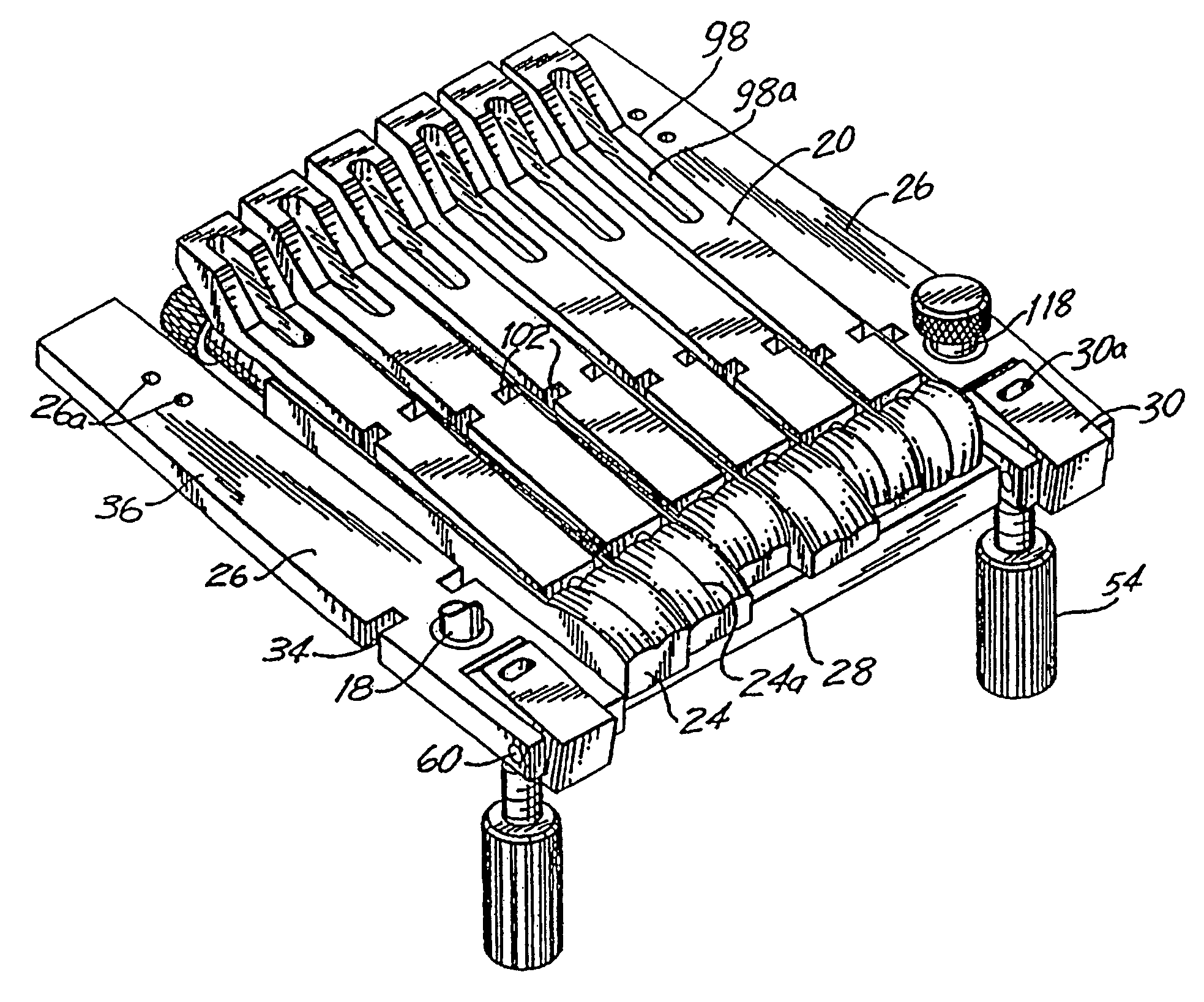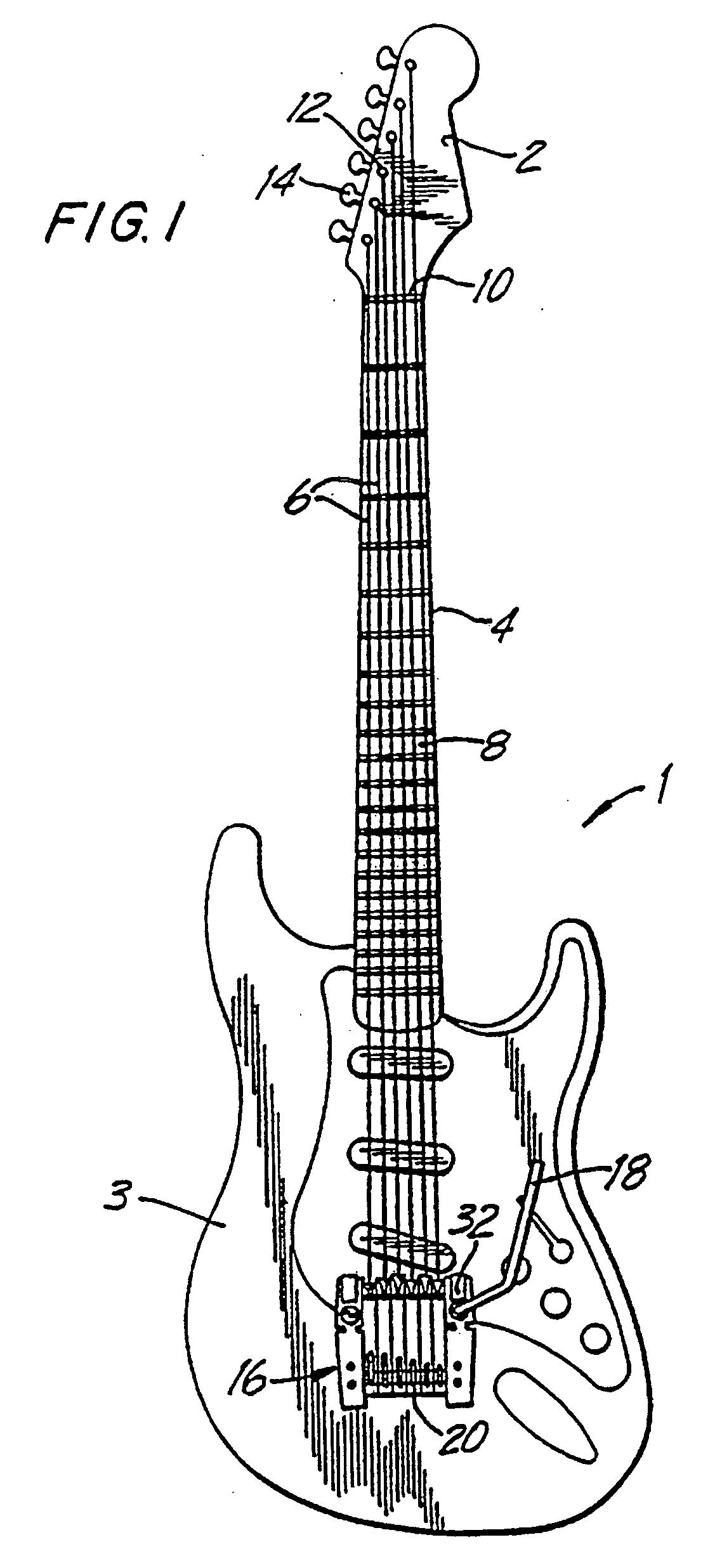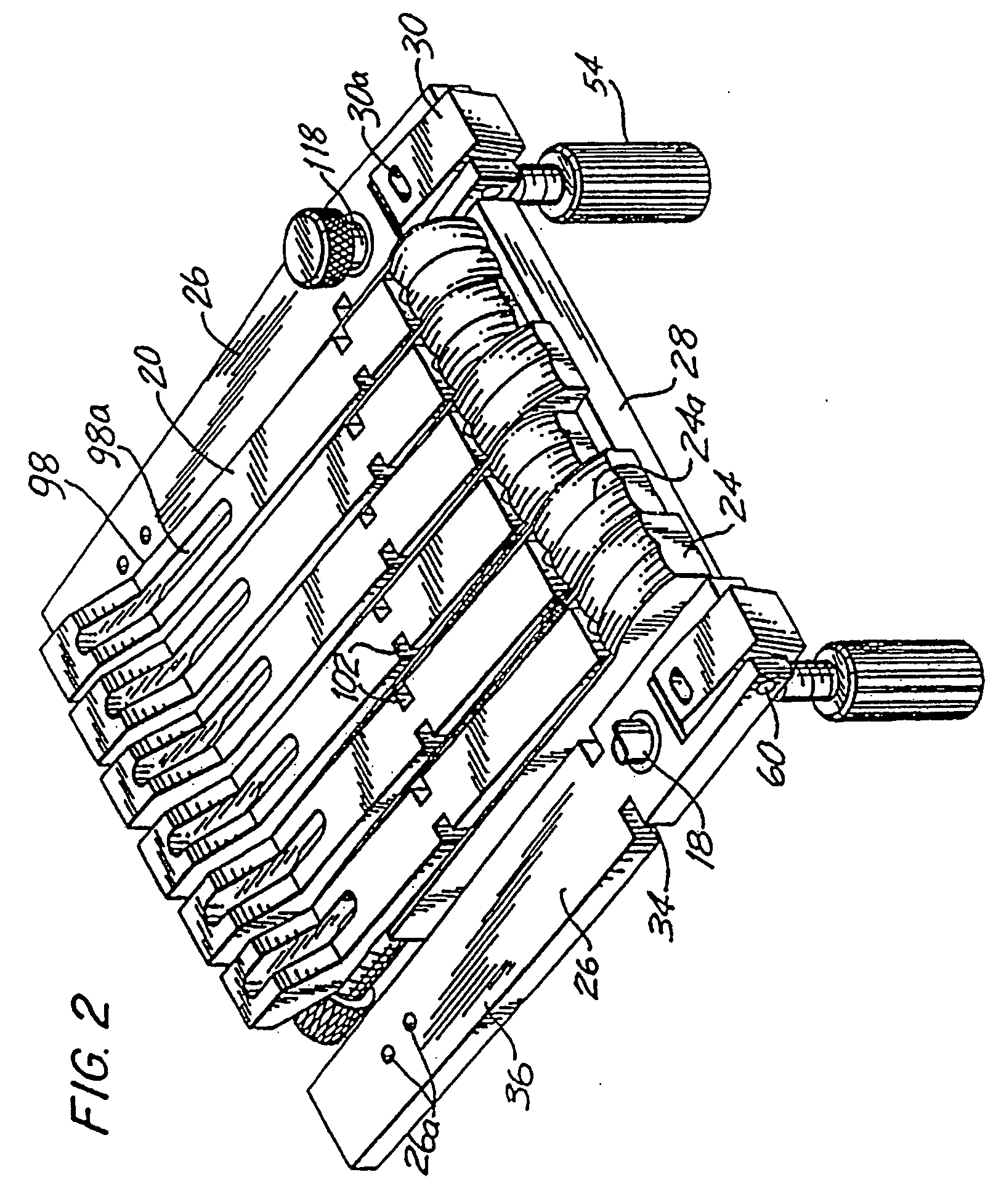When the strings are plucked or bowed, they produce complex vibrations transmitted through the bridge or string supports to the
wooden box causing its various surfaces to oscillate and setting in motion the air within, and surrounding the box, causing audible sound.
Obtaining the desired musical effect can be very difficult.
Fine tuning the strings has long been a problem for guitars.
A problem existing in tuning the strings is that the two different tuning operations tend to conflict.
These different operation present difficulties in
pitch tuning and maintaining the tuned condition of a stringed
musical instrument.
Accordingly, when using a fulcrum tremolo, these counteracting features are not always balanced.
With the development of the fulcrum tremolo, that is, where the bridge plate is pivoted to provide a tremolo or vibrato effect, the problem of maintaining an effective pivoting action and assuring the return of the bridge plate to an initial position has presented problems.
Often, the solution of one problem in pivoting the bridge plate has resulted in the introduction of another problem.
As an example, when the bridge plate is pivoted, there is a tendency to upset the
harmonic tuning of the strings.
Further, the pivot support of the bridge plate, such as disclosed in the Rose U.S. Pat. No. 4,171,661, presented problems in maintaining the proper pivoting action, in returning to the original tuned position, in limiting the range of pivotal movement, and in maintaining the pivot means free from wear.
If pivoting of the bridge plate results in wear of the surfaces at which the pivoting action takes place, friction is introduced into the movement of the bridge plate which interferes with its return to the initial position and original tuning.
In the Proelsdorfer U.S. Pat. No. 2,304,587, string tensioning devices placed on the tailpiece for
fine tuning the
pitch of the strings of violins, guitars and the like, were disclosed, however, such pitch adjustment is quite limited in range and designed to offer minor adjustment of pitch rather than raising and adjusting from an untensioned condition the strings by the tuners placed on the head of the instrument.
In effecting the
fine tuning, the bridge elements were provided with a constant
radius, so that
harmonic tuning would not be effected when establishing
fine tuning, however, fine tuning is limited to a range of about two musical pitches and is inadequate for bringing the strings to proper pitch for compensating string stretch, or achieving common alternate tuning commonly requiring a larger range of pitch change.
This arrangement did not offer lateral height adjustment of the base plate and the field of rotation was not as great as in the Rose improvement.
With these various improvements, a number of problems remained in the known fulcrum tremolo related to the bridge element and its movement when the tremolo is pivoted.
Since the second critical point is offset from the pivot axis, initially there is a tendency for the string height at the bridge to decrease when the base plate is pivoted toward the body with the strings contacting the finger board and causing an undesirable buzzing
noise and / or deadening the sound of the strings.
In addition, there is a tendency for
string length to increase when the pitch is raised and for the
string length to decrease with the pitch is lowered acting counter to the desired effect.
Furthermore, the different diameters and construction of the strings on the instrument cause the strings to stretch at different rates and lose pitch relationship.
In the installation of the fulcrum tremolo, there is a problem in routing the cavity to receive the tremolo.
A further problem experienced in guitars and, particularly, in electric guitars is establishing a
formant where the various resonances of the instrument co-act with the vibrations of the strings to enhance playing quality.
Accordingly, the tone of such instruments is limited for the most part by the vibrational characteristics of the strings.
Another problem is that some players tend to rest their hand on the fulcrum tremolo while playing and inadvertently move the tremolo and detune the instrument.
However, the actual pitch and strength or the vibrating of the
tuning fork were not adequately considered and the result was unbalanced at best.
Problems exist for conventional peg tuning, such as the amount of peg tightening required and the need for adjustment to compensate for on-going tuning and normal string stretch which takes place during use.
Further, often there is a relatively long distance between the nut and the tuning pegs where the string bends causing unequal tension on opposite sides of the nut and tuning problems.
Accordingly, the required correction, is tedious and
time consuming involving unclamping, readjusting of the clamp, returning, reclamping and further readjustment.
 Login to View More
Login to View More  Login to View More
Login to View More 


